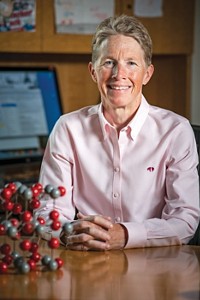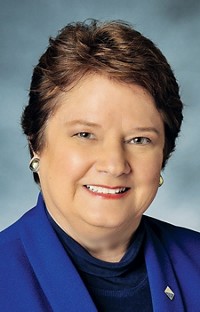Advertisement
Grab your lab coat. Let's get started
Welcome!
Welcome!
Create an account below to get 6 C&EN articles per month, receive newsletters and more - all free.
It seems this is your first time logging in online. Please enter the following information to continue.
As an ACS member you automatically get access to this site. All we need is few more details to create your reading experience.
Not you? Sign in with a different account.
Not you? Sign in with a different account.
ERROR 1
ERROR 1
ERROR 2
ERROR 2
ERROR 2
ERROR 2
ERROR 2
Password and Confirm password must match.
If you have an ACS member number, please enter it here so we can link this account to your membership. (optional)
ERROR 2
ACS values your privacy. By submitting your information, you are gaining access to C&EN and subscribing to our weekly newsletter. We use the information you provide to make your reading experience better, and we will never sell your data to third party members.
Environment
ACS meeting musings
by Bibiana Campos Seijo
March 21, 2016
| A version of this story appeared in
Volume 94, Issue 12

Energy—its generation, transport, and storage—is a topic that continues to be at the top of the agenda for scientists globally. It was one of the main topics at last year’s Global Grand Challenges Summit in Beijing, and at the American Chemical Society national meeting in San Diego last week, it was the focus of many presentations and events. It was definitely center stage at the symposium organized by Immediate Past-President Diane Grob Schmidt in collaboration with Michelle Buchanan from Oak Ridge National Laboratory. Under the title “Research Opportunities for Future Energy Technologies,” the symposium explored the latest technological innovations in fields ranging as wide as nuclear energy, carbon capture and storage, and fuel cells.
The first speaker was Franklin Orr, the undersecretary for science and engineering at the Department of Energy. He focused on the report “Quadrennial Technology Review: An Assessment of Energy Technologies and Research Opportunities,” published by DOE last September. This is a significant piece of work—a total of 65 individual technology assessments took place—and it is available for the public at www.energy.gov/QTR.
He was followed by Donald DePaolo from Lawrence Berkeley National Laboratory, Krishan Luthra from General Electric, Jeremy Busby from Oak Ridge National Laboratory, Peter Olmsted from Georgetown University, Tom Jaramillo from Stanford University, and George Crabtree from Argonne National Laboratory. Among them, they reviewed the current status of the field. Regardless of the area of expertise discussed, there was consensus among speakers that energy continues to be the engine of the economy and future energy systems should aim to be cheap, safe, robust, and efficient.
Orr celebrated that in the past few years we have seen an acceleration in the transformation of U.S. energy systems to be cleaner and more efficient: from safer nuclear energy to better building design and insulation. But even with cost reductions in renewable energy generation changing the U.S. energy mix, the symposium’s speakers all agreed that this was not happening fast enough and society should commit greater resources.
Another topic that received a lot of airtime during the ACS national meeting was the public perception and communication of science. At an open meeting of the ACS Board of Directors, Amy Harmon, the New York Times journalist and two-time Pulitzer Prize winner, asked those assembled, “Do scientists have a duty to communicate to the public?” With a show of hands, the audience overwhelmingly responded in the affirmative to this question.
Harmon advised that scientists “stop defending science” and also “avoid the data dump.” Scientists, she said, should strive to “find a story with a plot and suspense,” eschew jargon when describing their work, and state what (to you/us chemists) is obvious. She also argued that, rather than concentrating all our efforts on educating people and avoiding misinformation, our time would be better spent building trust and resonance with the public.
As always, many outreach events and hands-on demonstrations (see photo) took place at ACS San Diego— building trust one person at a time.
Views expressed on this page are those of the author and not necessarily those of ACS.





Join the conversation
Contact the reporter
Submit a Letter to the Editor for publication
Engage with us on Twitter